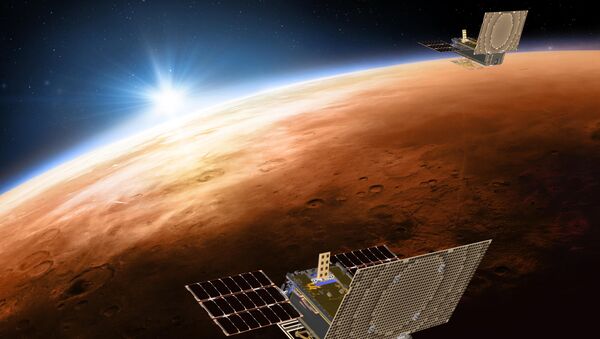NASA has admitted to having lost contact with two of its MarCO (short for Mars Cube One) probes, nicknamed WALL-E and EVE, upon them going silent for over a month after passing by Mars. The two probes were launched along with the InSight Mars lander and helped NASA watch its descent to the Red Planet.
MarCO's mission was to determine how far into deep space new small probes, produced using the CubeSat technology, can go without failing, so after passing by Mars, WALL-E and EVE continued to go further into the expanse of our solar system until both stopped receiving and transmitting commands. WALL-E is currently over 1.6 million kilometres away from Mars and EVE has ventured even further — 3.2 million kilometres from the Red Planet.
NASA has two versions of what might have happened to them. WALL-E had a leaky thruster, which could cause "wobbling". At such distances from Earth the probes have to align their antennas very precisely to communicate with operations control and wobbling might prevent them from doing so.
READ MORE: NASA's InSight Mars Lander Starts Work, Sends Selfie (PHOTOS)
Another possibility is that their brightness sensors malfunctioned, meaning they won't be able to determine where the sun is. They need to know its position to direct their solar panels correctly and to recharge their batteries.
NASA admits that there is little chance that it will be able to re-establish connection with the probes in summer. They are orbiting the sun and by that time, the two will come much closer to Earth. However, it's not guaranteed that their equipment will survive such a long journey.
READ MORE: LISTEN What Does Mars Wind Sound Like? NASA Reveals Audio Sample From Red Planet
In any case, the NASA team considers MarCO a "spectacular success" since they have shown that such small (the size of a briefcase) and relatively cheap (around $18.5 million per mission) satellites can operate in deep space.
"This mission was always about pushing the limits of miniaturized technology and seeing just how far it could take us. We've put a stake in the ground. Future CubeSats might go even farther", Andy Klesh, the mission's chief engineer said.


